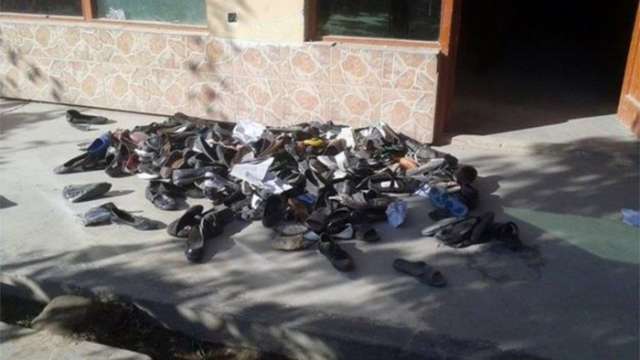Rescue teams have been sent to remote mountainous areas where the effects of the quake are still unclear.
The quake`s focus was deep, reducing its impact. Victims included 12 Afghan schoolgirls killed in a stampede as they tried to leave their classes.
"They fell under the feet of other students," a disaster official in the province of Takhar told Reuters.
Reports said many people across the region, afraid of a new quake, spent the night sleeping outside in temperatures close to freezing.
Afghanistan`s Chief Executive, Abdullah Abdullah, said the earthquake was the strongest felt in the country in recent decades.
The government was working to provide assistance for those affected, he said.
One official from the north-eastern Badakhshan province told Associated Press that rescue teams would not be able to reach affected mountainous areas until later on Tuesday.
Parts of the province have also been seized by Taliban fighters.
Most of the fatalities so far reported are in northern Pakistan, with at least 214 known casualties.
In Khyber Pakhtunkhwa province alone, authorities said at least 179 people were known to have died, and more than 1,800 were injured.
The Pakistan Red Crescent tweeted that its disaster response team had been dispatched to the affected areas.
Pakistan`s information minister said the top priority was to save lives, and the rescue operation would continue "round the clock", state media reported.
India, Iran and US forces in Afghanistan have all offered help, but so far the local authorities have not requested assistance.
Even at its revised magnitude of 7.5, this was a powerful tremor. Around the world only about 20 quakes each year, on average, measure greater than 7.0.
But its focus was deep - much further below the surface than the 7.8 quake which brought widespread destruction to eastern Nepal in April. That event was only 8km deep and was followed in early May by an aftershock with magnitude 7.3.
Similarly, the devastating 2005 Kashmir earthquake was magnitude 7.6 and just 26km deep. Today`s quake, at a depth of more than 200km, appears to have caused widespread but less severe ground shaking.
The US Geological Survey (USGS) reported that the earthquake was centred in the mountainous Hindu Kush region, 76km (45 miles) south of Faizabad, in Badakhshan province.
It was deep - over 200km (125 miles) below the surface - which meant the shaking at ground level was less than for a shallow earthquake.
The USGS said a series of tremors - all measuring 4.0 or higher - had struck west of the original quake in the following hours.
People injured from an earthquake receive treatment outside the Ayub Medical Hospital in Abbotabad, Pakistan (26 Oct. 2015)Image copyrightAP
Residents of Kabul and the Indian capital Delhi were shaken by the earthquake, which sent frightened people rushing into the streets.
Buildings in the Tajik capital Dushanbe were also damaged by the tremors.
The region has a history of powerful earthquakes caused by the northward collision of India with Eurasia. The two plates are moving towards each other at a rate of 4-5cm per year.
In 2005, a magnitude-7.6 quake in Pakistan-administered Kashmir left more than 75,000 people dead.
In April this year, Nepal suffered its worst earthquake on record, with 9,000 people killed and about 900,000 homes damaged or destroyed.
More about:
















































